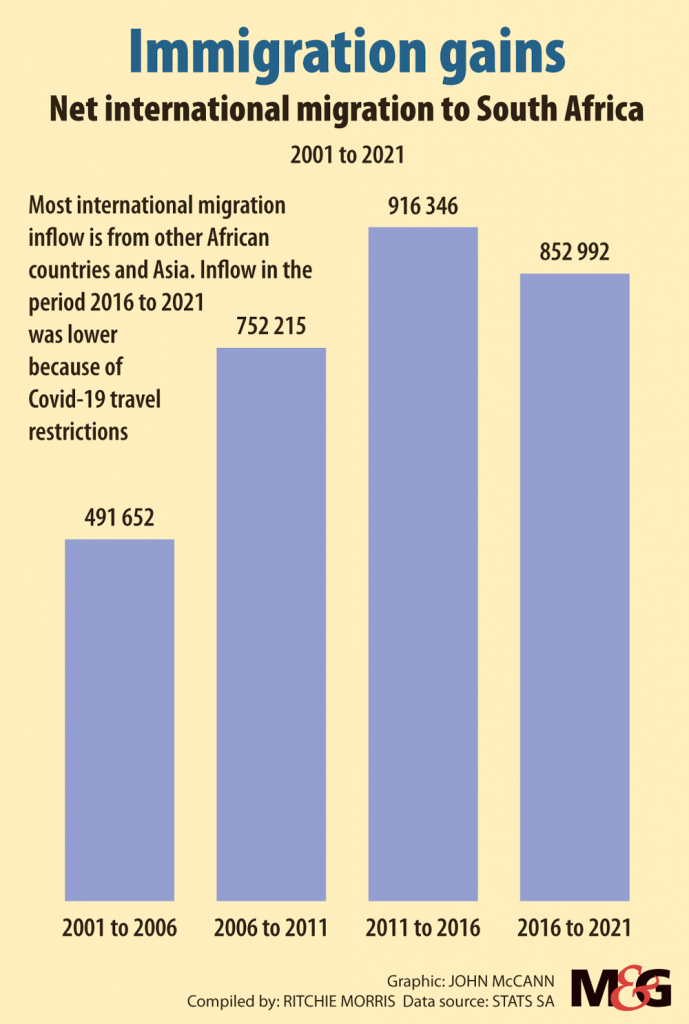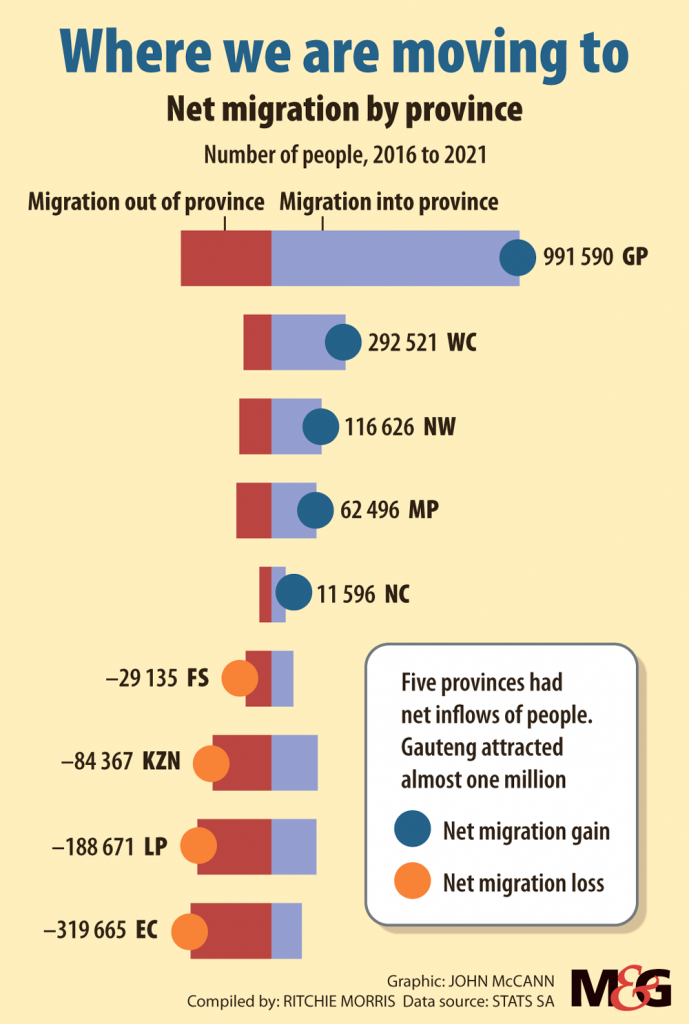“Without first determining and understanding a country’s carrying capacity, it’s no use speaking enthusiastically about growth and a sustainable future.”
This was the opening sentence in an August 2013 article I wrote titled, Has SA exceeded its limits?
The word (or expletive) “enough!” comes to mind when following the news. Enough talking. Enough crime, unemployment, failing infrastructure, broken political promises, lies, corrupt and dishonest leadership, illegal strikes, societal delinquency. Enough negativity.
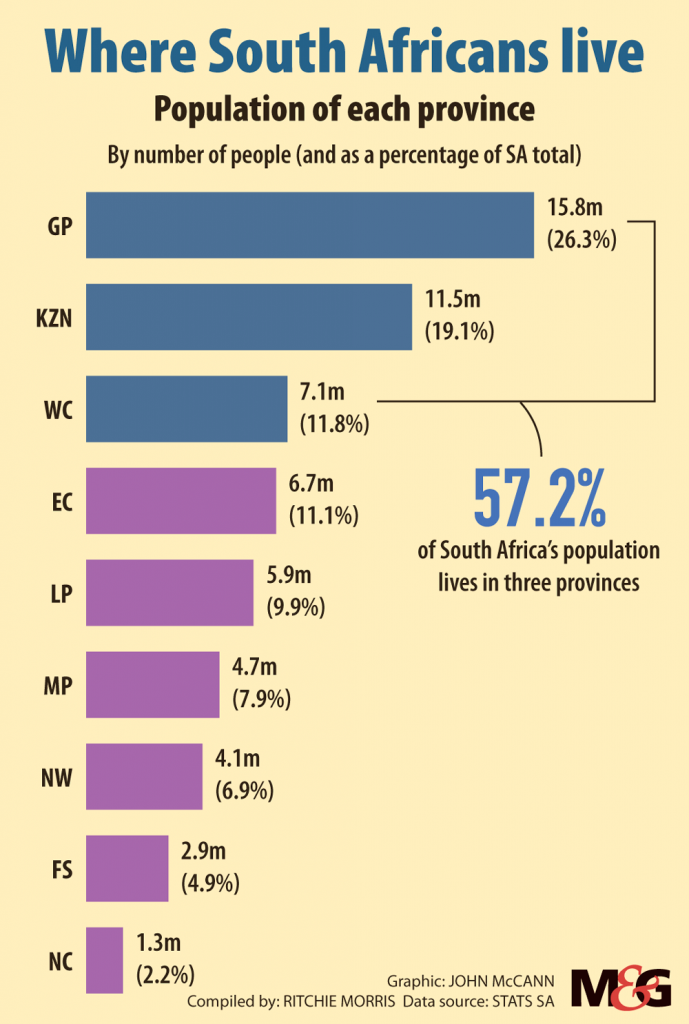
The management guru Peter Drucker said, “If you can’t measure it, you can’t manage it.” While this doctrine may be more applicable to business, it is also applicable to how a country manages its present and future trajectory. Without fully understanding the capacity of the country, town and suburb to achieve a certain level of service provision within the constraints of its carrying capacity, it is pointless advocating plans and policies that cannot be achieved. Plans and policy need to ensure that carrying capacity overshoot is not aggravated into the future. Not doing this will only make a bad situation worse.
South Africa is fraught with social, economic and ecological crises. Much has been inevitable because of poor leadership and policy implementation. But much has been self-inflicted by complacency and people not doing enough to ensure the status quo is corrected.
The wellbeing of our country and every person living in it depends on a healthy environment — the ecological carrying capacity. Ecological issues top the three other aspects of carrying capacity, namely, social, economic and physical. Cultural anthropologist Margaret Mead said: “We won’t have a society if we destroy the environment.” Has society heeded her word?
South African society
A large percentage of young people make up the total population of about 60.2 million. The table below summarises the percentage by age group in South Africa as illustrated in the pyramid graphic.
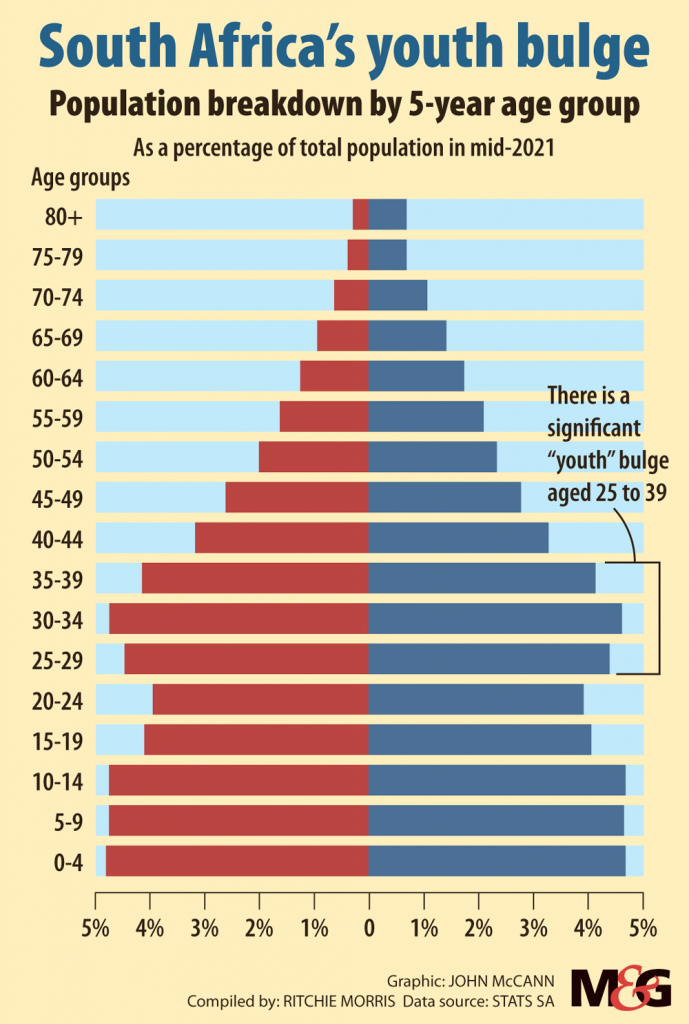
Stats SA presented the mid-2021 population breakdown which is important information for planning purposes when considering carrying capacity. Gauteng has a higher proportion of adults (25 to 39) compared with the Eastern Cape, which has a higher proportion of children (0 to 14).
More than half of the South African population lives in three provinces (Gauteng, KwaZulu-Natal and the Western Cape).
From 2016 to 2021 five provinces had net inflows of people. Gauteng attracted 991 590 migrants.
Births drive natural population growth but migration also plays a part. Most inflow is from Africa and Asian countries.
The above statistics should inform planning — where are people moving to and where are services most needed? This relates to carrying capacity. Important sociopolitical questions arise: “Is it morally right to allow the mass movement of people to an area where the resources are already under demand stress? Does inaction by planners, politicians and municipal officials not make them complicit in inevitable suffering that will occur? Should migration be discouraged unless a benefit occurs?
Population density
Population density is linked to carrying capacity. The higher the population density the more robust the carrying capacity must be. The two, when not in balance, promote migration, both internally and between countries. The table below shows population densities in Southern African countries as a crude number of people/km2.
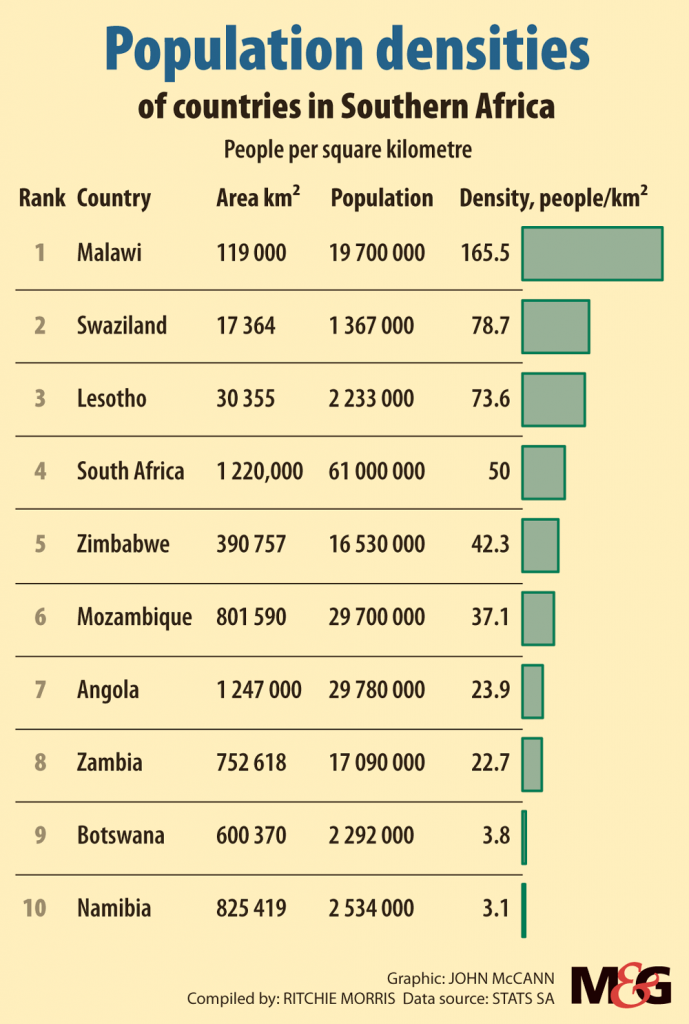
But there are many countries with far higher population densities (people/km2), for example Germany (234), Italy (197), Holland (419), England (429) and Portugal (112). It is not just the numbers that determine the balance with carrying capacity but the level of development of the society, economy, infrastructure and resource use in that country.
What is carrying capacity ?
Carrying capacity considers ecological, physical, economic and social aspects.
Ecological: The ability of the environment to support a certain number of people, leaving enough resources for the environment’s own needs.
Physical: The space available and the level of infrastructure and engineering in place, for example a sewage treatment works can only process the waste from a population of y-size
Economic carrying capacity: Depends on the level of sophistication of business and industrial sectors and whether they are capable of employing a certain number of people at an income level that will provide them with a satisfactory living standard. The informal sector is an important component.
Social carrying capacity: Is related to the level of satisfaction and quality of life that a society can achieve under the set circumstances. For example, overcrowding tends towards greater social problems than affluent areas with green open spaces.
 South African Reserve Bank sees need to raise interest rates further
South African Reserve Bank sees need to raise interest rates further
Migration
Movement of people occurs into, out of and within the country. It is difficult to find any accurate figure for the number of immigrants to South Africa. In September this year Home Affairs Minister Aaron Motsoaledi said there are about four million foreigners in the country. Consensus is that three-quarters of South Africa’s immigrants are from other African countries.
According to Zimstats, last year saw the highest number of Zimbabweans leave the country since independence in 1980; 84% left the country for employment reasons, 9% for family reasons and 0.1% were socially displaced.
Chrissie Kaponda, the (2016) Malawian high commissioner to South Africa said most of them wanted to find jobs. In 1990, half of all Malawian emigrants lived in Zimbabwe, followed by Zambia (14%) and South Africa (11%). By 2015 the share of Malawian immigrants in Mozambique rose from 2% to 25% (77 488), Zimbabwe 102 849, South Africa 76 605, Zambia 11 258, Tanzania 6 907, and Botswana 4 596.
It can be deduced that Zimbabwe and Malawi’s economic carrying capacity is failing and is the driver for people to leave these countries.
Internal migration influences provincial carrying capacities. There is little difference in cause between the drivers of migration from Southern African and Asian countries to South Africa and the movement of people between provinces. Perceived better security and governance in some provinces may be a factor.
The concept of carrying capacity can also be applied to “rural to urban” migration within provinces.
Ecological and socio-physical services
Poor agricultural productivity, fast population growth and unpredictable weather are among obstacles to overcoming poverty, according to the World Bank.
South Africa’s carrying capacity is unable to satisfy demands. The leaders – politicians, business, civil and religious communities — must be honest with regard to the following points because only then can pragmatic solutions be found.
- The current economic and social carrying capacity will never create five million jobs. Nor will an unemployment level of 14% be achieved in the near future.
- While the rate of population growth has decreased in recent years, it remains problematic in the vulnerable population sector living below the poverty datum line.
- Most immigrants are unskilled work seekers, not work creators.
- The youth are moving to the cities in search of better education and work opportunities. No work means disillusionment, frustration and hungry stomachs.
- An overload of people moving into informal settlements means increased pressure for serviced land and housing. With little income, who pays for the services and maintenance?
- With age comes the social need for a partner, marriage and a family. Thus the demand for social infrastructure, grant support and work grows.
- The crux of human survival is clean water and food — a healthy environment. But, the perpetual downward spiral created by the net population growth and urbanisation, resulting in rapid growth of informal settlements, leads to poor water, sanitation and living conditions. The ability of a society to feed itself in the urban areas is reduced because this society relies on income from work to obtain food.
- Poor maintenance of municipal infrastructure destroys the urban physical carrying capacity.
What solutions exist?
- Thought of a Basic Income Grant (BIG) must be changed to one of remuneration for community service — a Community Service Income (CSI). If done wisely, a CSI can facilitate skills development and be married to public works programmes.
- Urban and peri-urban food gardens must be fast tracked by municipalities. Investment in this area is crucial to alleviating unemployment and hungry stomachs.
- South Africa must create work farms similar to the kibbutz of Israel. Land reform in SA without the means (finance, skills) to do anything constructive with it is pointless.
- Sell off unused public land in the cities, or fast-track private-public partnerships to develop this land. Also, give title deeds in previous homelands.
- Promote tourism.
- We have to make the country a safer place, not just for its own residents, but to encourage tourists to visit.
- Incentivise lower birth rates.
- Unions must abandon the idea of excessive pay for unskilled labour. Unions should also become job creators.
- Change the school curriculum to one which is more artisan and technology driven.
- Stop the black, white, them, us, your fault narrative.
Politicians fail to acknowledge the seriousness of overpopulation and do not raise the consequences of this issue enough because it might make them unpopular. Overpopulation cuts across all sectors of society with the ultra-rich being the biggest consumers of resources. But it is the poor who feel it most.
A society structured within the country’s ecological, economic, social and physical carrying capacity is the only solution. Determine the carrying capacity so that appropriate policy can follow to better manage the country. Without a healthy society we won’t have an environment. And without a healthy environment, we won’t have a decent society.
Have you had enough, or done enough, for society and the environment?














